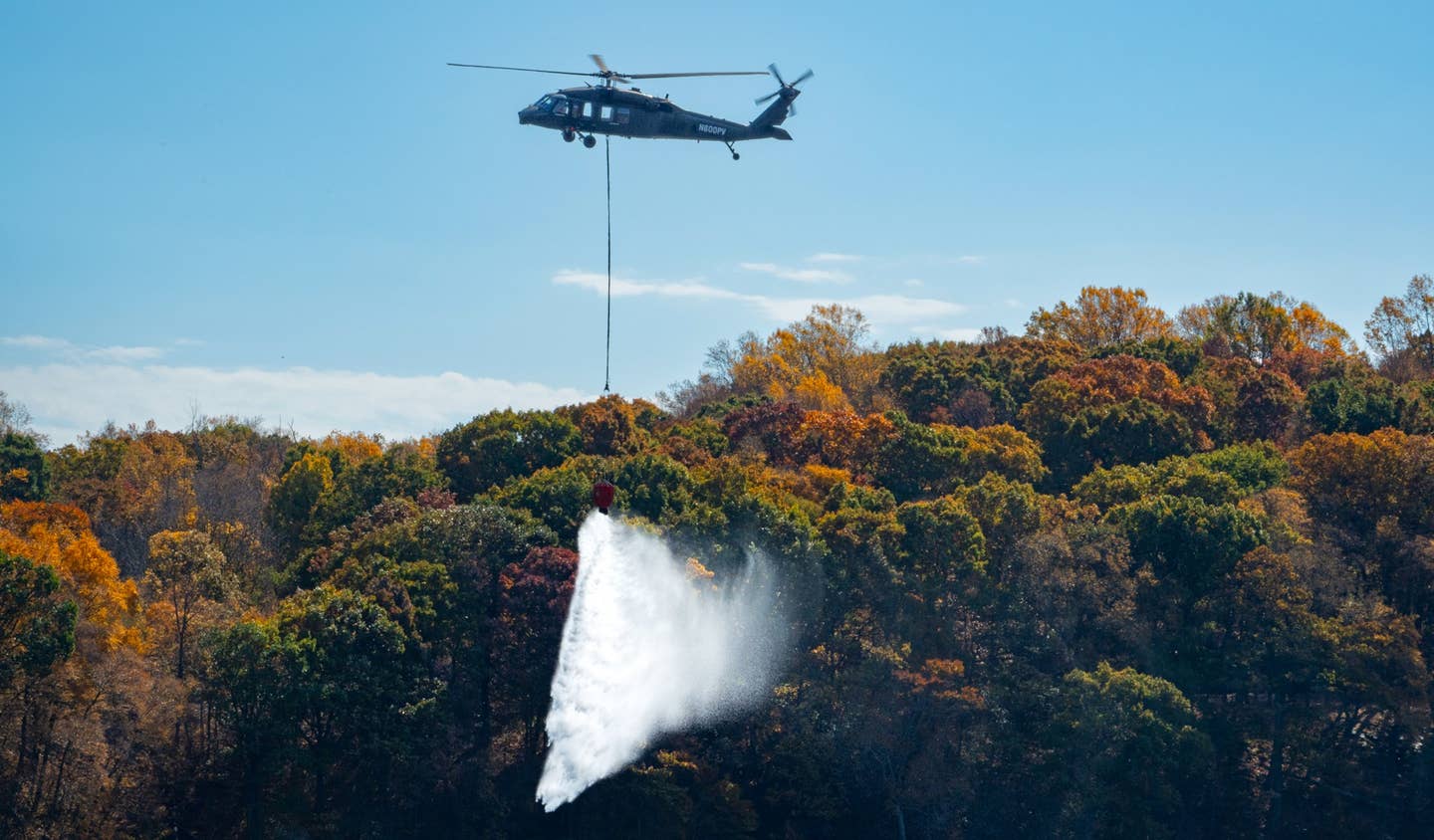Autonomous Black Hawk Demonstration Fights Fire With Precision
Sikorsky and Rain collaboration illustrates how uncrewed aircraft can play a role in searching for and attacking wildfires before they spread out of control, companies say.

An autonomous Black Hawk helicopter demonstrates an aerial water drop October 29 in Connecticut. A Wildfire Mission Autonomy System developed by Rain commanded the autonomous aircraft to launch, find, and suppress the fire. [Courtesy: Rain]
Sikorsky helicopters and autonomous aerial wildfire containment technology company Rain recently demonstrated that pilots don't have to be in the cockpit to fight fires with precision.
On October 29, a Sikorsky Black Hawk outfitted with Matrix flight autonomy technology and Rain’s Wildfire Mission Autonomy System was used to conduct an aerial water drop during a Rapid Wildfire Response Demonstration at Sikorsky's headquarters in Stratford, Connecticut.
The demonstration, which was part of a two-day wildlands firefighting meeting discussing autonomy, was viewed by representatives from NASA, the Federal Emergency Management Agency (FEMA), Defense Advanced Research Projects Agency (DARPA), Los Angeles County Fire Department, and Orange County Fire Authority.
During the 30-minute flight demonstration, a tablet was used to command the Black Hawk to take off, search, and find the fire, then drop water from a Bambi Bucket slung 60 feet beneath the aircraft. Each of three successive water drops extinguished a 12-inch-diameter, propane-fueled fire ring emitting a 3-to-6-inch-tall flame, demonstrating the precision of the Rain fire perception and targeting capability.
The Rain system also rapidly adjusted the flight path to account for an 8-to-10-knot crosswind during each water drop.
During the flights, Sikorsky safety pilots were in the Black Hawk cockpit monitoring the flight controls but were hands-off until the aircraft landed.
- READ MORE: How to Become an Aerial Firefighter
“With Rain’s wildfire mission software loaded onto the aircraft and a tablet, wildland firefighters in the field could deploy autonomous Black Hawk or Firehawk helicopters to search and attack wildfires before they spread out of control,” said Igor Cherepinsky, director of Sikorsky Innovations’ rapid development/prototyping group. “Having worked closely together for over a year, our two companies are ready to demonstrate the joint capability in more dynamic conditions chosen by firefighters.”
The idea is to suppress a fire in its incipient stage before it has a chance to grow and threaten lives and property.
- READ MORE: This Unit Is Always Fired Up and Ready
“Government agencies, aerial firefighting operators, and investors are coming together to learn and see how both flight and mission autonomy can help prevent high-intensity, million-acre wildfires,” said Maxwell Brodie, Rain CEO. "Wildfires cost the U.S. over $390 billion annually, and multiple risk factors are set to grow up to 30 percent by 2030. We look forward to demonstrating to lawmakers how autonomous aircraft can stop fires from breaking out, or continue the fight into the night, and in turbulent and smoky conditions, where crewed aircraft wouldn’t venture.”

Sign-up for newsletters & special offers!
Get the latest FLYING stories & special offers delivered directly to your inbox






